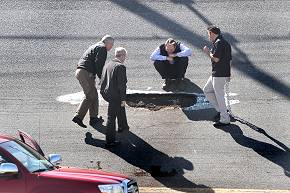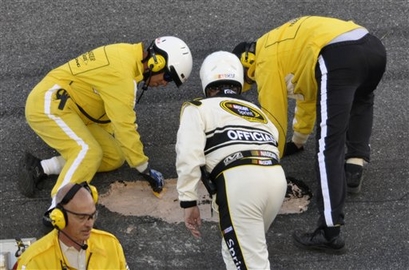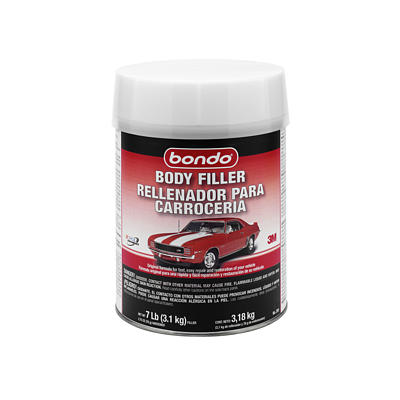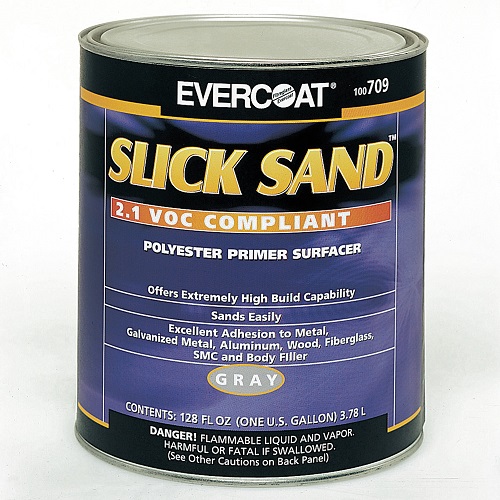|
|

|
Porsche, and the Porsche crest are registered trademarks of Dr. Ing. h.c. F. Porsche AG.
This site is not affiliated with Porsche in any way. Its only purpose is to provide an online forum for car enthusiasts. All other trademarks are property of their respective owners. |
|
|
  |
| GeorgeRud |
 Feb 22 2017, 03:33 PM Feb 22 2017, 03:33 PM
Post
#1
|
|
Advanced Member     Group: Members Posts: 3,725 Joined: 27-July 05 From: Chicagoland Member No.: 4,482 Region Association: Upper MidWest |
As I have no bodywork experience, I wonder if it's standard to completely cover the body with filler, then sand it down (as seen on many of the Velocity Channel restoration shows) before applying primer and color coats? Obviously this amount of hand crafting is not done during initial manufacturing, but is there an advantage to this? Seems a high build sealing primer would make this unnecessary.
|
| john77 |
 Feb 22 2017, 04:03 PM Feb 22 2017, 04:03 PM
Post
#2
|
|
Senior Member    Group: Members Posts: 621 Joined: 21-February 14 From: Los Angeles Member No.: 17,027 Region Association: Southern California 
|
As I have no bodywork experience, I wonder if it's standard to completely cover the body with filler, then sand it down (as seen on many of the Velocity Channel restoration shows) before applying primer and color coats? Obviously this amount of hand crafting is not done during initial manufacturing, but is there an advantage to this? Seems a high build sealing primer would make this unnecessary. My understanding is it comes down to how much money you're willing to spend. You can either pay for hundreds of man hours getting the metal absolutely perfect for paint, or you can get it as near as damnit, do a skim coat of filler and let that take care of the minor imperfections. The 'advantage' depends on who you ask. |
| mepstein |
 Feb 22 2017, 04:38 PM Feb 22 2017, 04:38 PM
Post
#3
|
|
914-6 GT in waiting                Group: Members Posts: 19,239 Joined: 19-September 09 From: Landenberg, PA/Wilmington, DE Member No.: 10,825 Region Association: MidAtlantic Region 
|
As I have no bodywork experience, I wonder if it's standard to completely cover the body with filler, then sand it down (as seen on many of the Velocity Channel restoration shows) before applying primer and color coats? Obviously this amount of hand crafting is not done during initial manufacturing, but is there an advantage to this? Seems a high build sealing primer would make this unnecessary. No |
| Unobtanium-inc |
 Feb 22 2017, 05:21 PM Feb 22 2017, 05:21 PM
Post
#4
|
|
Advanced Member     Group: Members Posts: 2,199 Joined: 29-November 06 From: New York Member No.: 7,276 Region Association: None 
|
Is it a "correct" way to restore, no, but does it happen, all day every day. In fact many shops have gone to the spray bondo. A friend who has a 356 shop said he picked up a trick from the Vette guys and sprays filler right out of the gun, put a nice layer on the whole car and sand down. Bondo itself if frowned upon but one of the best 356 restorers once made the comment that if the Factory would have had bondo they would have used it. In a sense they did use the bondo of the day, which was lead, and they used that very liberaly, I mean layed it on thick like frosting a cake.
So for the average dude, doing an average car, bondo away, the car will thank you. What is and always will be a no-no is to bondo over rust, it is a sin that will come back to haunt you and fast, but for minor body work, lay on the mud! |
| Cairo94507 |
 Feb 22 2017, 06:03 PM Feb 22 2017, 06:03 PM
Post
#5
|
|
Michael      Group: Members Posts: 9,714 Joined: 1-November 08 From: Auburn, CA Member No.: 9,712 Region Association: Northern California 
|
I think the goal would be no thicker than a credit card. If they are layering it on thicker than that........ (IMG:style_emoticons/default/bs.gif)
|
| bretth |
 Feb 22 2017, 07:01 PM Feb 22 2017, 07:01 PM
Post
#6
|
|
Senior Member    Group: Members Posts: 899 Joined: 23-June 15 From: Central TX Member No.: 18,882 Region Association: Southwest Region |
Say no to bondo. My car was repainted by a previous owner and every exterior metal surface has a thin layer of bondo under the paint. Some areas thicker than others. Looks like crap.
|
| Unobtanium-inc |
 Feb 22 2017, 07:37 PM Feb 22 2017, 07:37 PM
Post
#7
|
|
Advanced Member     Group: Members Posts: 2,199 Joined: 29-November 06 From: New York Member No.: 7,276 Region Association: None 
|
Bondo is also handy for fixing holes in the course before a race!
Attached image(s)   
|
| cary |
 Feb 22 2017, 07:59 PM Feb 22 2017, 07:59 PM
Post
#8
|
|
Advanced Member     Group: Members Posts: 3,900 Joined: 26-January 04 From: Sherwood Oregon Member No.: 1,608 Region Association: Pacific Northwest 
|
Less is more.
Hammer & dolly. Stud gun and slide hammer. Shrinking disk. Then just a fine skim coat to finish up. |
| Olympic 914 |
 Feb 22 2017, 08:08 PM Feb 22 2017, 08:08 PM
Post
#9
|
   Group: Members Posts: 1,662 Joined: 7-July 11 From: Pittsburgh PA Member No.: 13,287 Region Association: North East States 
|
Is it a "correct" way to restore, no, but does it happen, all day every day. In fact many shops have gone to the spray bondo. A friend who has a 356 shop said he picked up a trick from the Vette guys and sprays filler right out of the gun, put a nice layer on the whole car and sand down. Bondo itself if frowned upon but one of the best 356 restorers once made the comment that if the Factory would have had bondo they would have used it. In a sense they did use the bondo of the day, which was lead, and they used that very liberaly, I mean layed it on thick like frosting a cake. So for the average dude, doing an average car, bondo away, the car will thank you. What is and always will be a no-no is to bondo over rust, it is a sin that will come back to haunt you and fast, but for minor body work, lay on the mud! IMHO This is pretty good spray-on bondo  Pretty easy to block flat. You need a BIG gun to spray it though. You regular 1.8 primer tip won't cut it. A 2.5 tip gun works good but you don't have a lot of time before it starts setting up. They say 30 minutes, my experience is it quits spraying at about 20 min. and you better hurry and clean the gun out. |
| Dave_Darling |
 Feb 22 2017, 11:17 PM Feb 22 2017, 11:17 PM
Post
#10
|
|
914 Idiot           Group: Members Posts: 14,981 Joined: 9-January 03 From: Silicon Valley / Kailua-Kona Member No.: 121 Region Association: Northern California 
|
Very very basic:
In theory, a shop should work on the metal to get it into almost perfect shape. Then a thin layer of filler (e.g., Bondo) is applied and sanded down to take things from "almost perfect" to "completely perfect". Different shops have different views of what "almost perfect" means. There are some people who can in many cases get the metal itself basically perfect, if given the time (and $$) to do so. Other shops seem to figure that if they get within a quarter-inch, they're cool. Stay away from the latter. --DD |
| porschetub |
 Feb 22 2017, 11:54 PM Feb 22 2017, 11:54 PM
Post
#11
|
|
Advanced Member     Group: Members Posts: 4,697 Joined: 25-July 15 From: New Zealand Member No.: 18,995 Region Association: None |
I see the use of high build primer in the USA lots ,is that just Bondo (we call it bog ) ? or as I assume a high solids epoxy ???.
Happy to run a skim off Bondo on a repair with the surface prep and mixed properly otherwise its a waste of time. As for a whole car that's just BS,I see quite a few metal finished flare installs on here seems most use a little filler to blend in the weld area. |
| Darren C |
 Feb 23 2017, 06:10 AM Feb 23 2017, 06:10 AM
Post
#12
|
|
Member   Group: Members Posts: 392 Joined: 26-December 14 From: Chichester UK Member No.: 18,255 Region Association: England |
Bondo thats Slick...rhymes with dick
|
| McMark |
 Feb 23 2017, 06:44 AM Feb 23 2017, 06:44 AM
Post
#13
|
|
914 Freak!                Group: Retired Admin Posts: 20,179 Joined: 13-March 03 From: Grand Rapids, MI Member No.: 419 Region Association: None |
It's the same as every other aspect of a restoration, you get what you pay for. It's W_A_Y easier to put a thin skim coat over the whole car and then just block it smooth, instead of applying filler just to the 'dents'. Most of the time on an older car you don't realize that the body is full of waves and bumps. And that doesn't even get into the mismatch of panels. Sometimes the only way to make a car with a replaced fender line up is to build up a section with bondo. If you use a skim coat over the whole car you skip the process of deciding where to put filler, you skip the 'oops I missed a spot'. You get it all in one shot and can move on quickly.
1. Entire Skim Coat = cheap, and still can look amazing or crap depending on the body guy. 2. Minimize Filler = quite a bit more expensive, and still can look amazing or crap depending on the body guy. 3. No Filler = insanely expensive, and still can look amazing or crap depending on the body guy So before ya'll go and condemn bondo/filler, think about how much you would pay for paint/metalwork. If you think $5000 is too much for a paint job, then you can't afford option 2 & 3. Bondo/Filler doesn't make or break a paint job, it's exclusively your budget and the skills of the body guy. |
| Mark Henry |
 Feb 23 2017, 07:44 AM Feb 23 2017, 07:44 AM
Post
#14
|
|
that's what I do!                Group: Members Posts: 20,065 Joined: 27-December 02 From: Port Hope, Ontario Member No.: 26 Region Association: Canada |
This would be my basic method, but I haven't painted a whole car in almost 10 years.
http://www.914world.com/bbs2/index.php?sho...p;#entry1045953 Strip paint, blast etc... Flatten dents, welds etc. Two part PPG epoxy primer Fiberglass bondo on welds Finish dents with regular bondo, only as needed. Two part PPG epoxy primer (1 coat) High build primer and final block sand Seal with two part PPG epoxy primer (1 coat), this is actually the first coat of my topcoats. Top coats. High build primer is a paint used to fill minor imperfections during block sanding, never try to use it as a bondo filler. |
| mepstein |
 Feb 23 2017, 08:12 AM Feb 23 2017, 08:12 AM
Post
#15
|
|
914-6 GT in waiting                Group: Members Posts: 19,239 Joined: 19-September 09 From: Landenberg, PA/Wilmington, DE Member No.: 10,825 Region Association: MidAtlantic Region 
|
This would be my basic method, but I haven't painted a whole car in almost 10 years. http://www.914world.com/bbs2/index.php?sho...p;#entry1045953 Strip paint, blast etc... Flatten dents, welds etc. Two part PPG epoxy primer Fiberglass bondo on welds Finish dents with regular bondo, only as needed. Two part PPG epoxy primer (1 coat) High build primer and final block sand Seal with two part PPG epoxy primer (1 coat), this is actually the first coat of my topcoats. Top coats. High build primer is a paint used to fill minor imperfections during block sanding, never try to use it as a bondo filler. I'm pretty sure the high build primer we use is a type of epoxy primer so the additional coats of epoxy are not nesassary. A sealer is not always needed, especially if you are using all materials from the same product line. There are also DTM - direct to metal, fillers available. |
| veekry9 |
 Feb 23 2017, 08:14 AM Feb 23 2017, 08:14 AM
Post
#16
|
|
OldMember     Group: Retired Members Posts: 3,068 Joined: 17-June 13 From: TO Member No.: 16,025 Region Association: Canada |
http://www.westsystem.com/ss/filler-selection-guide/
(IMG:style_emoticons/default/smile.gif) Polyester based fillers are convenient for a cheap solution,the quality,not so much. Shrinkage is much lower,and the use for sealing spotwelded overlap panels is effective. Aircraft wings use the adhesives,so the grip is far superior,the mix can be tailored to the application.. The epoxy has a distinct advantage,and that is very low moisture absorption and transmission. Any marine repairman can attest to that truth,having popped a few blisters on polyester hulls. There is no drawback to the good stuff,particularly for a rare Porsche. A testimonial. / |
| Unobtanium-inc |
 Feb 23 2017, 08:58 AM Feb 23 2017, 08:58 AM
Post
#17
|
|
Advanced Member     Group: Members Posts: 2,199 Joined: 29-November 06 From: New York Member No.: 7,276 Region Association: None 
|
Here's the question every man has to ask himself when restoring a Porsche. How much time and money do I have? I know guys who have been restoring their cars for 30 years. I normally tell these guys they should sell their 356 and buy a 914, and you'll be driving this weekend.
But if you're restoring your 914 which has an end value of high teens or low 20's if it turns out nice then you better watch the dollars you put in, if not you have $50,000 in a car that ends up being worth $20,000. Most 914's haven't reached the stage where you can hire a good restoration shop and tell them to "call me when it's done". There is still a heavy presence of DIY in doing a 914. With that being said you can learn the art of metal work or you can learn the lesser art of body filler, or more importantly, learn a combination of the two. Body filler can fill in a lot of imperfections and if you are new to body work you can hope to get a panel to about 75-80% of where it needs to be, body filler can take you the rest of the way home. I'm a firm believer in the "Code Of Clint", a man's got to know his limitations. That extends to both his skills and his wallet. So to answer the original guy's question, feel free to use body filler when needed, given the alternative of paying a body guy thousands, possibly tens of thousands. |
| Andyrew |
 Feb 23 2017, 09:33 AM Feb 23 2017, 09:33 AM
Post
#18
|
|
Spooling.... Please wait           Group: Members Posts: 13,376 Joined: 20-January 03 From: Riverbank, Ca Member No.: 172 Region Association: Northern California 
|
The only thing that I have ever covered with filler and sanded down was a 914 rear trunk. It has such a minor curve to it and is so wide without support that trying to fix a wave with metal work is almost impossible.
For this I prefer a mix of plastic filler and glazing putty. I did this on my rear trunk and sanded the whole trunk down to 0-1/8" in the highest spots of filler because doing it this way was much quicker than spot filling. I have seen many hot rod shops do it the way you mentioned, which I think is very lazy. If you ever see a car done in mexico they dont believe in using a hammer and dolly. Just a hammer to pound the dent in and cake filler in as thick as they can. A high build primer with a big tip, >2.0 or better will work just as well and provide a better sealing affect. The typical method of doing body repair is this, Primer filler whole car Guide coat Sand down with 80grit to see low spots Fix / fill low spots Repeat steps till flat Sand down to desired grit (Depends on type of paint/color) Primer sealer Paint Clear (if used) |
| Mark Henry |
 Feb 23 2017, 10:22 AM Feb 23 2017, 10:22 AM
Post
#19
|
|
that's what I do!                Group: Members Posts: 20,065 Joined: 27-December 02 From: Port Hope, Ontario Member No.: 26 Region Association: Canada |
I'm pretty sure the high build primer we use is a type of epoxy primer so the additional coats of epoxy are not nesassary. A sealer is not always needed, especially if you are using all materials from the same product line. There are also DTM - direct to metal, fillers available. I think you're right and I imagine tech has changed, but I always felt I had best result laying down a coat of epoxy before the filler. I'd use the short strand FG bondo for welds, as it would seal a missed pinhole, just a skim then regular bondo on top of it. Sealer for the top coat depended on colour, yellow needed a sealer as it's terrible for coverage. I believe the yellow primer on my bug (link) was a primer/sealer. I personally never used guide coats, I'd just pick different colours of regular and high build primers. Once I began a job nothing touched the surface that wasn't a 2 part product. Some of this is like a brand of oil or gasket sealant, every painter has favorites and stick with what has worked well for them in the past. |
| rick 918-S |
 Feb 24 2017, 02:34 PM Feb 24 2017, 02:34 PM
Post
#20
|
|
Hey nice rack! -Celette                Group: Members Posts: 20,422 Joined: 30-December 02 From: Now in Superior WI Member No.: 43 Region Association: Northstar Region 

|
Only use what you need. Here's a link that shows the process of Un-filling body panels. Starts getting good around page 6.
http://www.914world.com/bbs2/index.php?sho...=104128&hl= |
  |
1 User(s) are reading this topic (1 Guests and 0 Anonymous Users)
0 Members:

|
Lo-Fi Version | Time is now: 26th April 2024 - 09:36 AM |
Invision Power Board
v9.1.4 © 2024 IPS, Inc.









